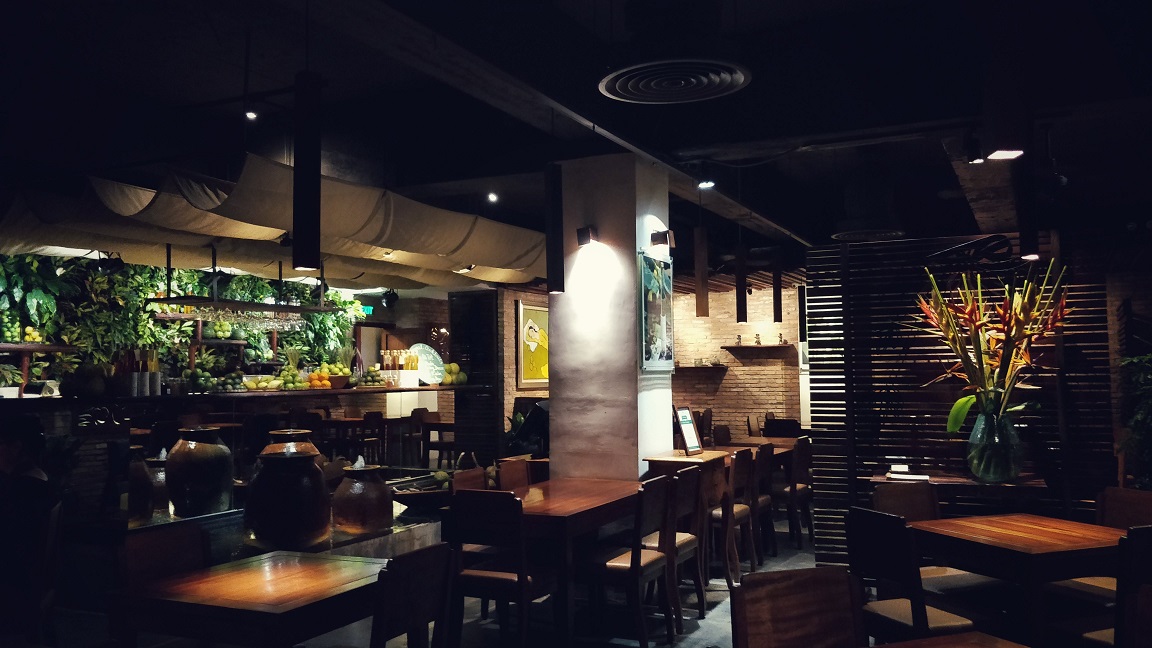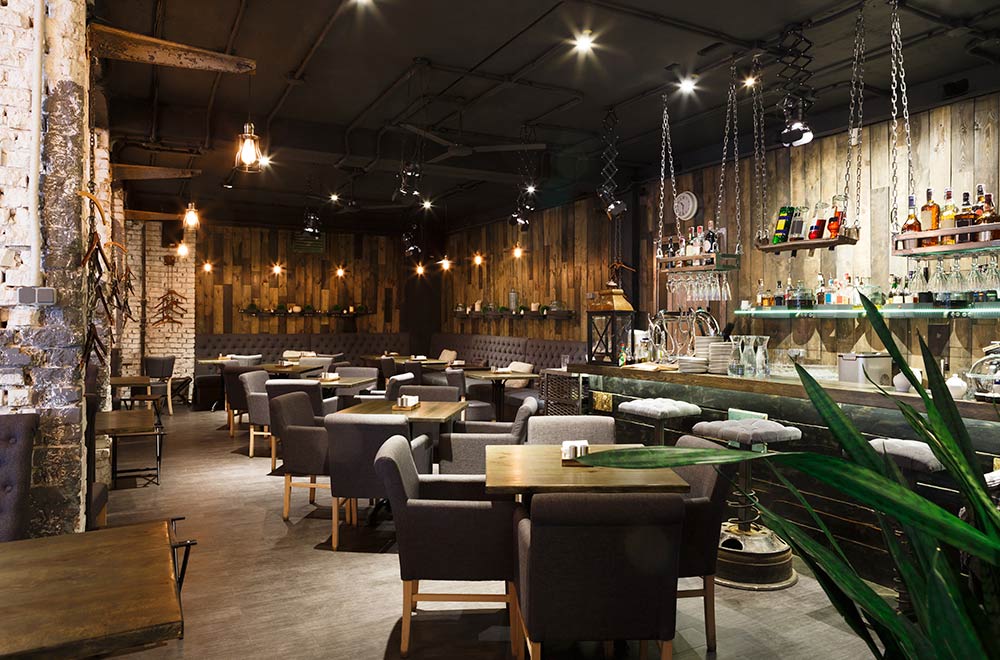Pan Asian Restaurant Islamabad: Discover Exquisite Asian Cuisine
Savor Authentic Asian Cuisine With a Pan-Asian Twist for a Cooking Adventure
Embarking on a culinary journey through genuine Asian food, boosted with a Pan-Asian twist, supplies an unique opportunity to check out the rich tapestry of tastes that specify the region's diverse cooking traditions. As you consider these attracting meals, consider the cultural narratives and historical impacts that shape them, each bite supplying a tale waiting to be uncovered. best asian restaurant Islamabad.

Exploring Pan-Asian Flavors
In the world of worldwide gastronomy, Pan-Asian food attracts attention for its remarkable diversity and the unified interaction of tastes from various Oriental cultures. This culinary method celebrates the special ingredients and rich customs found throughout the continent, producing a tapestry of preferences that is both interesting and enjoyable. Key to Pan-Asian cuisine is its capacity to balance contrasting flavors-- wonderful, salty, spicy, and sour-- while highlighting the quality and high quality of each active ingredient.
From the umami-rich soy sauce of Japan to the fiery chili peppers of Thailand, Pan-Asian cuisine provides a comprehensive combination of flavors. These aspects are typically combined in creative ways, boosting recipes with layers of intricacy. As an example, using aromatic natural herbs such as lemongrass and cilantro, common in Vietnamese and Thai food, includes a revitalizing brightness to dishes, while the unification of coconut milk provides a velvety, abundant texture.
The focus on fresh fruit and vegetables and aromatic flavors ensures that each dish is not only a banquet for the palate but also for the senses. Pan-Asian food invites diners to start a culinary trip, discovering the vast and varied landscapes of Asian gastronomy with every bite.
Combination Meals to Attempt
While Pan-Asian cuisine is celebrated for its conventional tastes, the contemporary culinary landscape is progressively accepting fusion meals that blend these timeless components with impacts from other areas. This innovative strategy not only honors the rich heritage of Oriental cookeries however additionally introduces novel taste experiences that interest modern tastes buds.
An archetype of such a blend recipe is the Korean-Mexican taco, where seasoned bulgogi beef is covered in a warm tortilla, topped with kimchi and a zesty gochujang-infused salsa. This mix weds the vibrant, mouthwatering flavors of Korea with the vivid, fresh elements of Mexican food. Likewise, sushi burritos have actually gained popularity, integrating the delicate virtuosity of Japanese sushi with the hearty, hand-held convenience of a burrito, commonly featuring fusion components like tempura shrimp and avocado with a drizzle of wasabi mayo.
An additional notable dish is Thai curry ramen, which infuses the creamy, aromatic flavors of Thai curry right into the comforting brew of standard Japanese ramen, developing a harmonious blend that tantalizes the detects. These blend meals prolong beyond plain uniqueness; they represent a cooking discussion in between societies, motivating expedition and advancement on the planet of Pan-Asian cuisine.
Vital Active Ingredients and Seasonings
To truly appreciate Pan-Asian food, one should recognize the essential components and seasonings that create its structure. This diverse culinary design attracts from a rich tapestry of Eastern practices, using a harmonious mix of tastes and structures. Secret active ingredients include soy sauce, fish sauce, and oyster sauce, which present a mouthwatering umami deepness necessary to Asian recipes. Corresponding to go to the website these are rice vinegar and mirin, lending a fragile level of acidity and sweet taste.
Aromatic components are critical, with garlic, ginger, and lemongrass being common across numerous Pan-Asian recipes. These ingredients offer a great smelling base that improves the intricacy of flavors. Seasonings such as celebrity anise, cardamom, and cinnamon present heat and character, resembling influences from areas like China and India.

Food Preparation Methods and Tips
Grasping the art of Pan-Asian food calls for experience with its distinctive food preparation strategies, each contributing to the vivid tapestry of tastes this culinary practice is celebrated for. Central to these methods is the stir-fry, a quick cooking technique that protects the dietary honesty and vibrant shades of active ingredients. Utilizing a wok, the stir-fry technique enables even warm circulation, essential for accomplishing the particular structure and taste equilibrium of Pan-Asian meals.
Another fundamental strategy is steaming, especially common in Chinese food. This gentle technique keeps the natural tastes and nutrients of active ingredients, making it suitable for seafood and veggies. Dumplings, a precious staple, commonly benefit from steaming, resulting in soft, delicious textures.
Cooking, additionally essential, passes on great smoky midsts to meals such as Korean bulgogi or Japanese yakitori (asian restaurant isb). This method frequently involves marinating components, permitting flavors to pass through deeply prior to food preparation over an open flame or hot plate
Lastly, grasping the art of balancing flavors-- sweet, sour, salted, read more bitter, and umami-- is vital. Correctly layering these elements can raise a meal from normal to extraordinary, providing a facility and satisfying culinary experience that personifies the significance of Pan-Asian cuisine.
Dining Experiences Worldwide
Throughout the world, Pan-Asian cuisine offers an unmatched dining experience, commemorated for its rich tapestry of tastes and vivid presentations. This culinary sensation has actually gone beyond cultural borders, capturing the hearts and tastes of food fanatics worldwide. In cosmopolitan cities fresh York, London, and Sydney, Pan-Asian dining establishments offer as fusions where cooking customs from Thailand, Japan, China, and beyond assemble, giving diners with an eclectic mix of recipes that highlight the region's diversity.
The global appeal of Pan-Asian food hinges on its ability to use both credibility and technology. Cooks skillfully wed traditional ingredients such as lemongrass, soy sauce, and miso with contemporary techniques, resulting in recipes that are both refreshingly brand-new and acquainted. This combination enables diners to begin on a cooking journey that appreciates heritage while welcoming modernity.
Additionally, dining experiences are boosted with thoughtfully made settings that show the values of Pan-Asian appearances. From minimalist Japanese-inspired insides to dynamic Thai-themed spaces, each restaurant offers a distinct atmosphere that enhances the culinary offerings. Therefore, clients are not simply consuming a meal but partaking in a social experience, making Pan-Asian dining a genuinely global sensation.
Conclusion
The expedition of Pan-Asian food uses a profound understanding of the elaborate interplay of flavors and cooking traditions across Asia. By accepting fusion recipes such as Thai curry ramen and sushi burritos, the culinary journey not just highlights the flexibility of conventional ingredients however also showcases ingenious modern-day methods. This gastronomic adventure, improved by cooking methods and essential flavors, offers a distinct possibility to value the social diversity and culinary official website artistry that specify Pan-Asian food on an international scale.
Beginning on a culinary trip via authentic Eastern food, enhanced with a Pan-Asian twist, provides a special chance to check out the rich tapestry of flavors that specify the area's varied cooking practices.In the world of global gastronomy, Pan-Asian food stands out for its remarkable diversity and the harmonious interaction of tastes from various Eastern cultures. Key to Pan-Asian food is its capability to balance different flavors-- sweet, salted, spicy, and sour-- while highlighting the freshness and high quality of each active ingredient.
